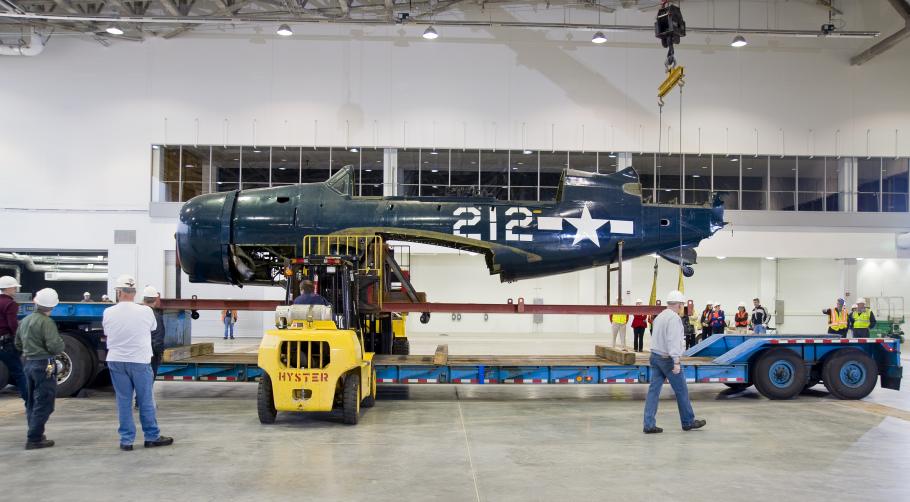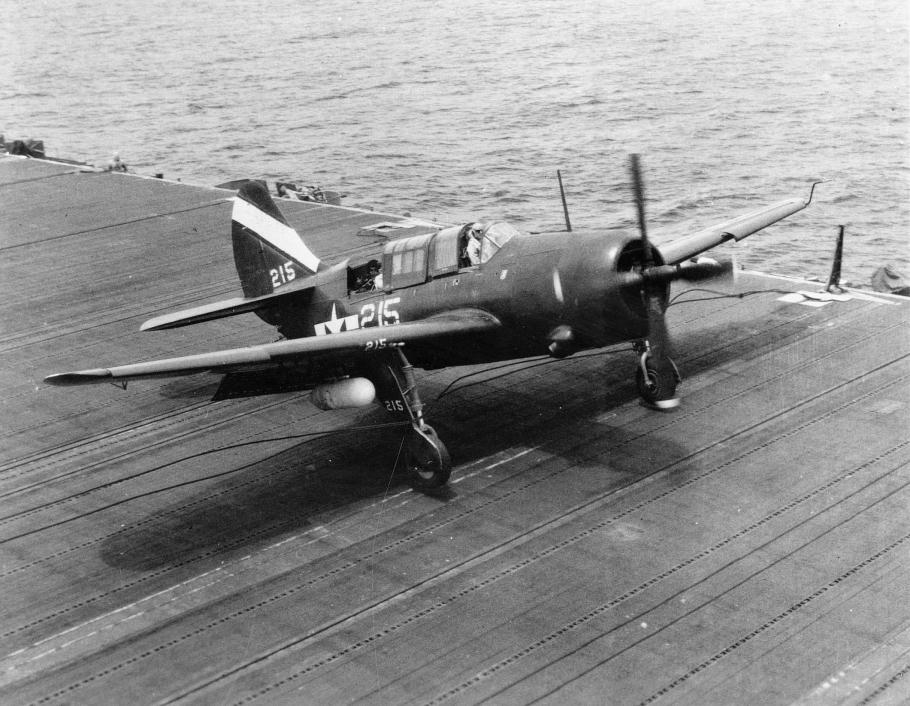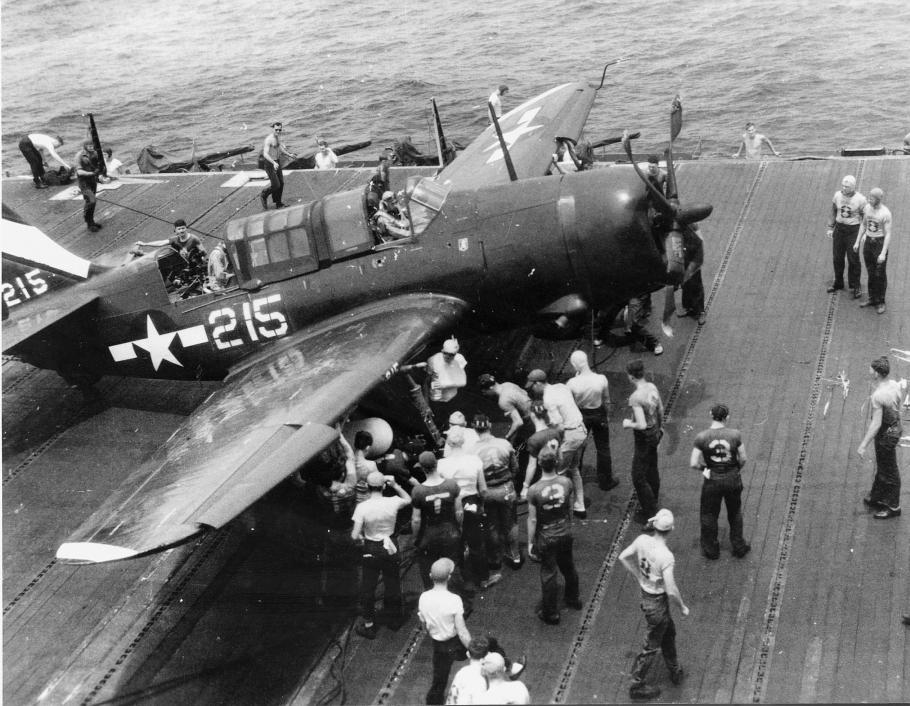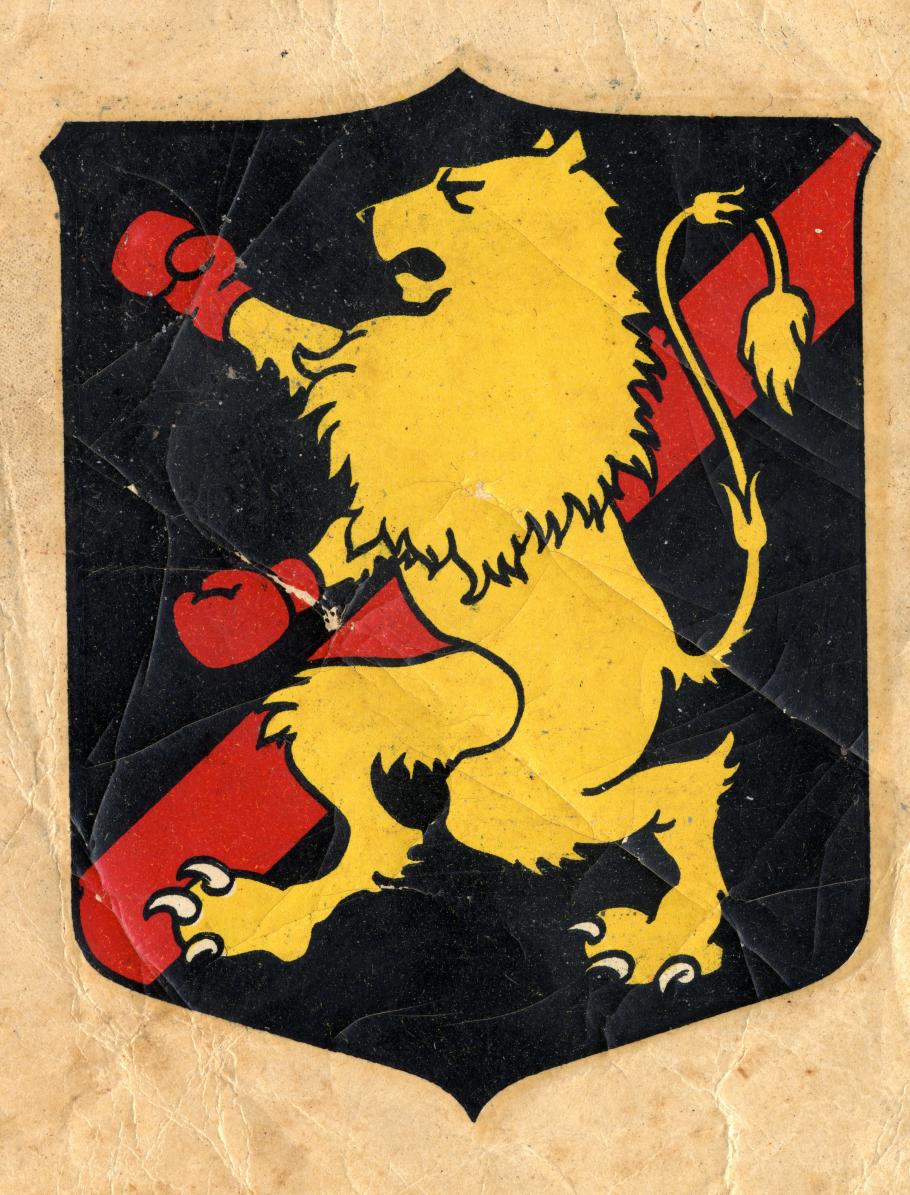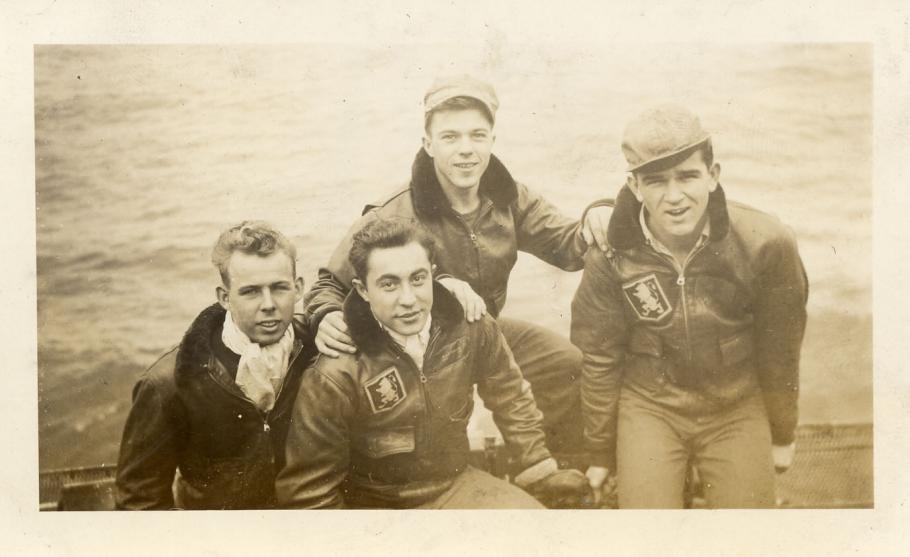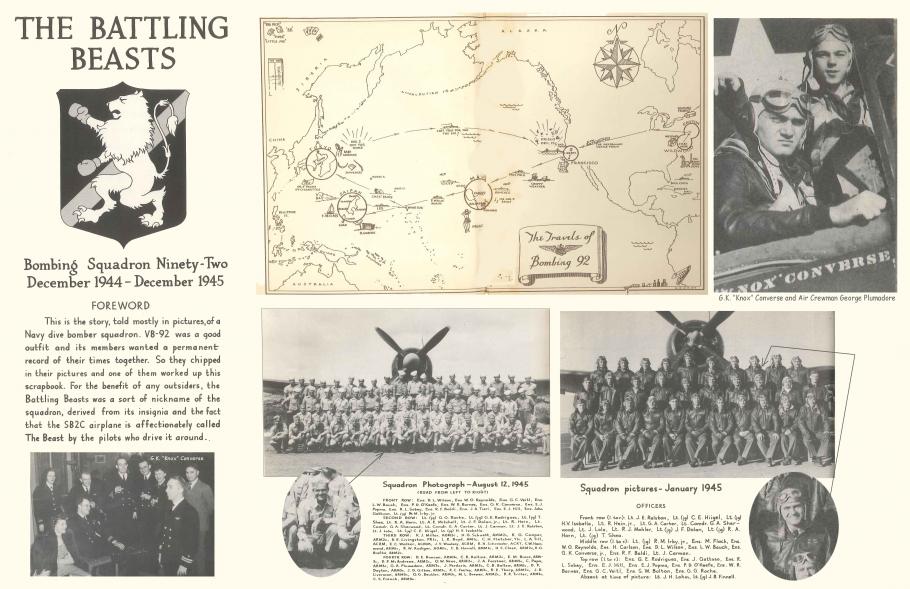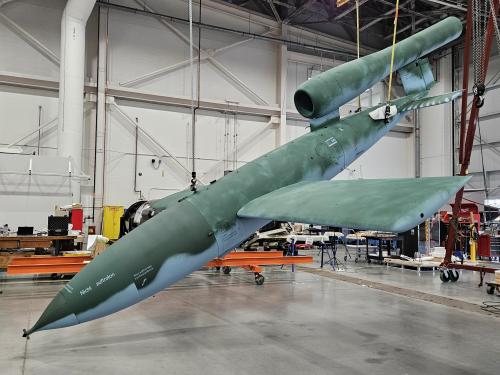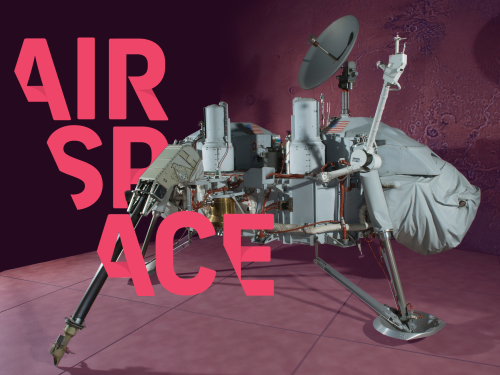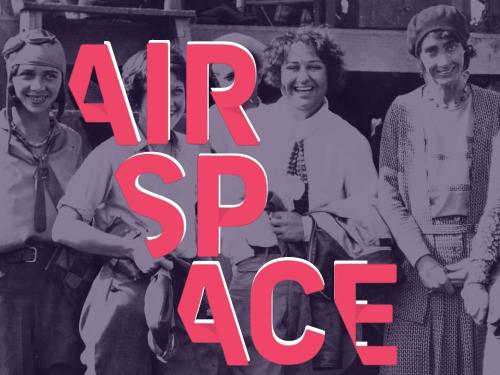
Restoring the Museum’s “Battling Beast”: The Curtiss SB2C-5 Helldiver
Jan 23, 2014
On Friday, March 14, 2014, the Museum will put on display its latest restored aircraft, a Curtiss SB2C-5 Helldiver, at the Steven F. Udvar-Hazy Center. For those of you attending the Center’s Open House on Saturday, January 25, you will get a chance to tour the Mary Baker Engen Restoration Hangar and see some of the work-in-progress firsthand (note that the fuselage will not be on view). In anticipation of those events, I would like to share with you some aspects of my work on our example of the famous American World War II dive bomber. The U.S. Navy accepted the Museum’s Helldiver on May 19, 1945, at the Curtiss-Wright factory in Columbus, Ohio. All Helldivers leaving the factory of that time would be a glossy “Sea Blue” and covered in numerous stencils that facilitated easier operation and maintenance. The aircraft went to Naval Air Station (NAS) Port Columbus, located on the same airfield, three days later. It was prepared for transfer to Guam in the Pacific Theater in San Diego in June for assignment to a Carrier Air Service Unit, arriving there in July. This Helldiver never saw combat, but served with various other Navy units until 1948 and entered the Museum collection in 1960. The artifact went on loan to the National Naval Aviation Museum (NNAM) in 1975 and returned to the Smithsonian in 2003.
The Museum’s Helldiver will be repainted as it appeared during the early phase of its assignment to Bombing Squadron (VB) 92, the “Battling Beasts,” on USS Lexington (CV-16) during September-December 1945. An interpretation of the photographs from the squadron yearbook and archival collections revealed that VB-92 aircraft markings changed while on Lexington. As they cruised toward Japan to take part in the occupation, VB-92 Helldivers featured the geometric symbol system used officially by Navy carrier groups during the earlier period of January to July 1945. Lexington’s symbol was a broad white diagonal bar on the vertical stabilizer and the wingtips. There is no explanation for the existence of the unauthorized geometric markings on VB-92 aircraft in September. The Lexington war diary held in the National Archives stated a general dissatisfaction with the authorized carrier letter identification system (“H” for Lexington) introduced in July 1945. Lexington’s officers and crew found it difficult to identify aircraft at distances beyond 400 yards during operations. That experience may have influenced the return to the geometric symbols when VB-92 embarked upon Lexington. Nevertheless, at some point, probably after the squadron had reached Tokyo Harbor and was under the scrutiny of official Navy directives, VB-92 changed its carrier identification markings to the authorized letter system. Due to the uniqueness of the earlier markings to VB-92, I chose the geometric symbol scheme for the Museum’s Helldiver.
Getting to the point where I knew how the Museum’s Helldiver looked during its initial squadron assignment would not have been possible without the input of VB-92 veterans and their families. A stack of documentary records provided by squadron members came with the Helldiver after its long stay at the NNAM. They included an amazing document that referenced VB-92’s aircraft by their official airframe (called the BuNo or Bureau of Aeronautics number) and aircraft, or side, numbers. Regardless of whether the Museum’s Helldiver featured white diagonal bars or “H”s on the wings and empennage, the correct side number for BuNo 83479 is “208.” Reed Rollins, who served with VB-92 as an aircraft radioman and gunner and flew in this specific Helldiver, confirmed many of these details and shared with us important documentation, including the colors for the Battling Beast insignia.
Charles French was also a member of VB-92 in 1945 that also flew in the rear cockpit of “208.” When he visited the Helldiver in the Restoration Hangar last May with his family, he donated his logbook to the Museum’s Archives.
Michael Converse donated his father’s squadron yearbook, The Battling Beasts: Bombing Squadron Ninety-Two, December 1944-1945, to the Museum’s Archives. Lt. (jg) Knox Converse was the assigned pilot to “208” during Lexington’s cruise from Tokyo back to the United States in November 1945. Michael has been an enthusiastic supporter of the project and reveals how the children of the “Greatest Generation” are ensuring that their family connections to World War II will continue.
Making these discoveries and connections with the history, people, and technology of naval aviation during World War II through the Helldiver has been a great experience. I hope visitors will enjoy seeing the artifact on display this spring.
Related Topics
You may also like
We rely on the generous support of donors, sponsors, members, and other benefactors to share the history and impact of aviation and spaceflight, educate the public, and inspire future generations. With your help, we can continue to preserve and safeguard the world’s most comprehensive collection of artifacts representing the great achievements of flight and space exploration.
